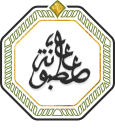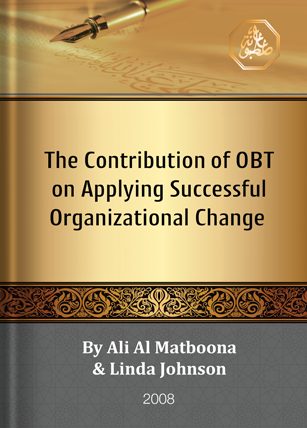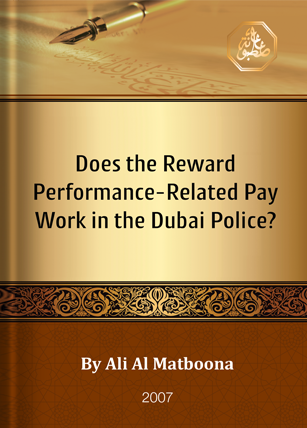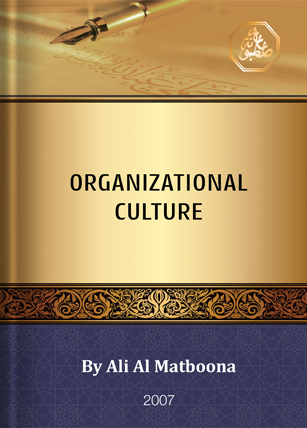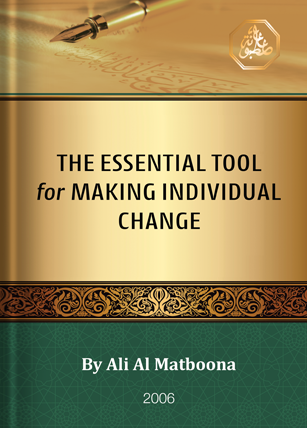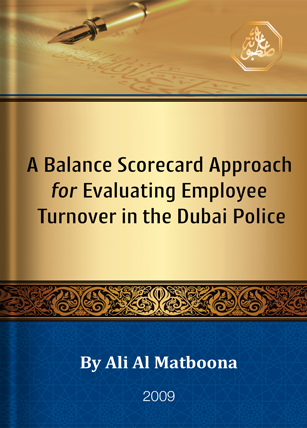
A Balance Scorecard Approach for Evaluating Employee Turnover in the Dubai Police, 2009
Traditional accounting has been applied in the past to control organizational performance, and it focused mainly on assets instead of focusing on human resources. Yet, despite the many disadvantage of traditional accounting, considerable numbers of establishments are still using this technique.
Additionally in the last two decades many modern accounting techniques have been developed, in order to gain precise information to improve the organization’s performance by measuring the cost. Such approaches as Activity-based Costing, Benchmarking, Balance Scorecard and so on have been developed. However these new techniques have drawbacks, which prevent the organization from gaining a competitive advantage, which will be discussed in the first part of this assignment.
The Contribution of OBT on Applying Successful Change Management, 2008
Change affects everyone in their personal and professional life. How we deal with change is different from what others do, due to a number of factors. This can be from people’s beliefs and values or from their current understanding of the situation related to the change. Therefore change can be seen as a vehicle to get from A to B, in other words to a new place from where they are now. This can take many forms and encompass many different kinds of behaviour, not only of organizations but individuals too.
Therefore for the scope of this assignment ‘change’ will be utilized in order to evaluate the extent to which Organizational Behaviour Theory (OBT) can help inform Management Practice (MP) with regard to individuals. Theory can help people understand management practices and inform learning, which can provide guidelines for managers to use under change situations. Certain questions need to be asked when looking at the scope of the assignment, firstly one needs to ask ‘what are OBTs and MPs?’ Establishing this will help to establish the extent to which OBT can help inform MP through change. Secondly, in looking at change and how it happens, one will question to what extend these theories can help inform MP, or not, as the case may be.
Does the Reward Performance-Related Pay Work in the Dubai Police, 2007
Performance related pay (PRP) is defined in terms of the introduction of payment systems related to some measure of work performance. For instance, some of its outputs are profit-sharing, merit pay, gain sharing, piecework, sales incentives, etc. It can also refer to the individual performance related pay system where salary increment is related to the results of performance evaluation, thus corresponding to appraisal related pay or merit pay. Individual performance related pay is referred to by some writers as (IPRP) to avoid confusion, (Heery, and Noon, 2001).
The usage of individual performance related pay schemes does not suggest that they are important to the organization or the employee. The importance of them lies in the coverage, as they might not necessarily cover all employees. For instance, 70% of them cover virtually all employees, and 80% are for senior management only. Some organizations’ coverage is even patchier, especially for those lower down the occupation hierarchy. On the other hand, the size of awards means that the value across the organization is around 10%, while the median value is around 4%, which implies a sum of money equal to about two week’s wage/ salary.
Organizational Culture, 2007
Organizational culture can be introduced as a set of shared beliefs, values and norms between an organization’s members. The culture is expressed through symbols and language (stories, myths, legends, etc). Culture expresses the management’s style based on unitarianism. New organization members are introduced to the culture through socialization and must cope with it. Otherwise, they are encouraged to leave.
Another definition of organizational culture is that it is created through the members’ social communication. It emerges as a result of the movement’s translation and meanings, made by employees and managers as they communicate. Symbols and language are the manifestations of the culture. Thus, organizational culture is the result of social interaction, something that cannot be manipulated or managed.
The concept of culture helps to explain more aspects of what goes on in groups and organizations. Any group with a stable membership and a history of shared learning will have developed some level of culture but a group that has had either a considerable turnover of members and leaders, or a history lacking in any kind of challenging events may well lack any shared assumptions. Thus, not every collection of people develops a culture.
The Essential Tool for Making Individual Change, 2006
An organisation has a life-cycle that starts from the moment of its birth, and it grows over time by constructing a healthy environment both internally and externally. The former factor can be observed in two main aspects: first: the flexible design of the structure; second: the standard of behaviour and attitude of individuals, which is shown by the degree of human resource satisfaction and interest. The latter factor can be illustrated by adopting the requirements of the business atmosphere, and also within the degree of customer reliability.
Coaching, 2006
Nowadays, coaching is regarded as one of the most modern and significant methods in the field of human resource development, one which helps employees to improve their performance at work. It is a way that can be of benefit to employees in both their personal life and at work. It is also a process that can create a learning environment within the organisation, and provides a solid foundation for many aspects of organisational health, such as self – confidence, commitment, credibility, loyalty and trust.
